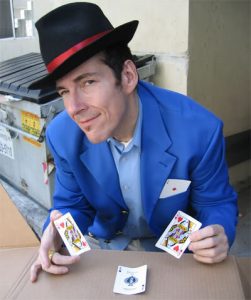
Though it seemed out of character, Republican support for last year’s Stanislaus County road tax, Measure L, was actually a natural evolutionary stage in a tax revolt that began in California forty years ago and has wreaked social and environmental havoc ever since.
Launched by Howard Jarvis and Paul Gann in 1977 through the initiative process, Proposition 13 heralded the anti-tax revolt and Reagan Revolution that still dominate federal, state, and local governments. Touted variously as a measure to rescue old folks whose escalating property taxes were driving them from their homes and as a remedy for government waste, Proposition 13 (Prop 13) also featured stealth benefits for the wealthy that are little understood even today.
In essence, Prop 13 fixed property taxes at 1% of value, limited increases to 2%, and prohibited reassessment until the property was sold. Today, most analysts agree the accrued benefits from Prop 13 have gone disproportionately to the wealthy—which shouldn’t be a surprise to anyone familiar with tax cuts in general. It’s also had a crippling effect on local governments, both city and county.
One of the clearest and most succinct statements of the effects of Prop 13 on city and county governments emerged from last year’s study by Carolyn Chu and Brian Uhler of the Legislative Analyst’s Office:
“Because higher-income households own more, higher-value homes and Proposition 13 tax relief is proportionate to home wealth,” they observe. “The majority of Proposition 13 tax relief (in dollar terms) goes to higher-income households.”
But there was another consequence of Prop 13 that has not just benefitted the wealthy, but burdened everyone else. When shifting responsibility for distributing revenue from the local to the state level, Prop 13 made it much harder for cities and counties to address their own needs—including public safety, public health and sanitation, and more. Despite major upheavals in demographics and land use, property tax revenue for cities and counties has been locked in at 1978 levels.
Naturally, as populations grew and land use changed, there were greater demands on services and infrastructure than ever, but Prop 13 limited revenue to address these needs. As demand for services rose, cities and counties turned to revenue alternatives, especially in the form of sales, utilities, and hotel taxes.
When urban residents see their water and sewer bills rising exponentially, for example, a major factor is Prop 13. Modesto residents recently saw a thirty-percent increase in water bills that is only step one in a series that could almost double their bills in only three years, the result of the city’s dire need for revenue. Meanwhile, many Stanislaus County farmers continue to receive water at rates below the cost of delivery.
The most attractive aspect of these kinds of taxes and rate increases for wealthy Republicans and conservatives in general is they are regressive—they impose higher burdens on lower-income people than they do on the wealthy. In the San Joaquin Valley, the negative effects are amplified, in large part because the ag economy protects our wealthiest citizens from some of the worst impacts of low tax revenue.
For example, businesses in downtown Modesto must consistently deal with health, safety, and aesthetic issues involving the burgeoning homeless population. The same is true for homeowners near gathering places for people experiencing homelessness, especially city parks. In both cases, the value of these properties is negatively affected, and the ability of city and county government to respond is hampered by effects of Prop 13. Farmers, on the other hand, are often far away from concentrated homeless populations.
It’s thus easy to see why benefits from Prop 13 have accrued to the wealthiest among us, especially when we account for the exponential increases in the value of farmland due to market forces like the almond boom. It’s also easy to understand why Republicans and the Farm Bureau found Measure L so attractive—as a regressive tax, it provided them far more benefits than liabilities. It will not, however, be beneficial at all for most of the people who have to pay it.
In fact, the road tax is far more likely to promote growth, which will require more services and infrastructure, and therefore more costs to a growing population of people who can least afford them. Such is the nature of the Reagan Revolution.
The wealthiest farmers among us have also had tremendous capital gains from lower taxes on income. In fact, tax policy is the single most efficient way to redistribute wealth, and has been the single greatest factor in America’s wealth and income inequality.
These same farmers benefit from some of the lowest labor costs in the nation, another result of a government policy that conveniently overlooks illegal immigration and resists increases in the minimum wage.
Promises of lower taxes have permanent appeal because we all hate taxes. But tax policy throughout the nation has involved far more sleight-of-hand and black magic than most people know. Though it’s promised to benefit everyone, instead it’s favored the few at the expense of the many.
Especially in the San Joaquin Valley, our wealthiest citizens have also been beneficiaries of environmental policies that have provided tremendous bounty for the favored few, while many others suffer grinding poverty and economic stress.
Next: More Magic: Turning water into wine….and almonds, and gold…

Thanks for this simple explanation, which most can understand, but many who support “tax reform” ignore. The wealthy benefit, the middle class suffers or gains nothing, and the working class are shut out of benefits.
Exactly right Mr. Rockwell. And as you know, the hits to the middle class are far greater than can be covered in a short piece of writing.